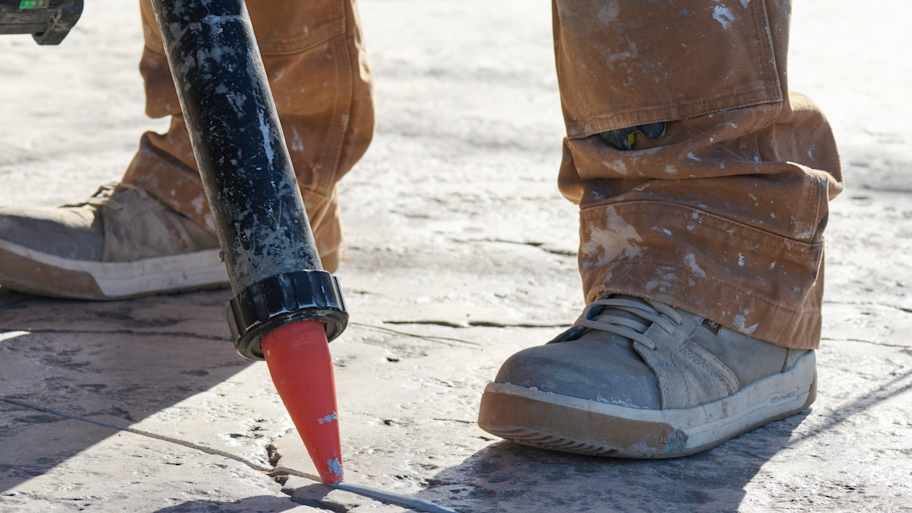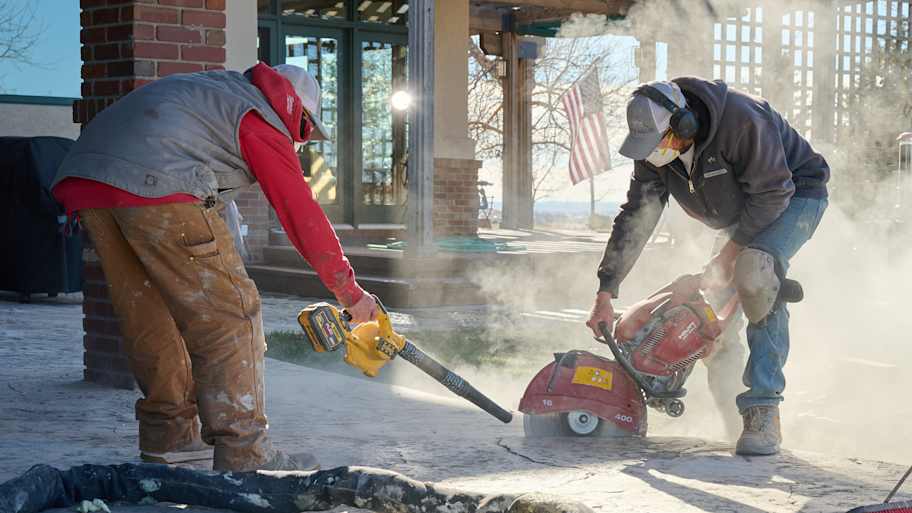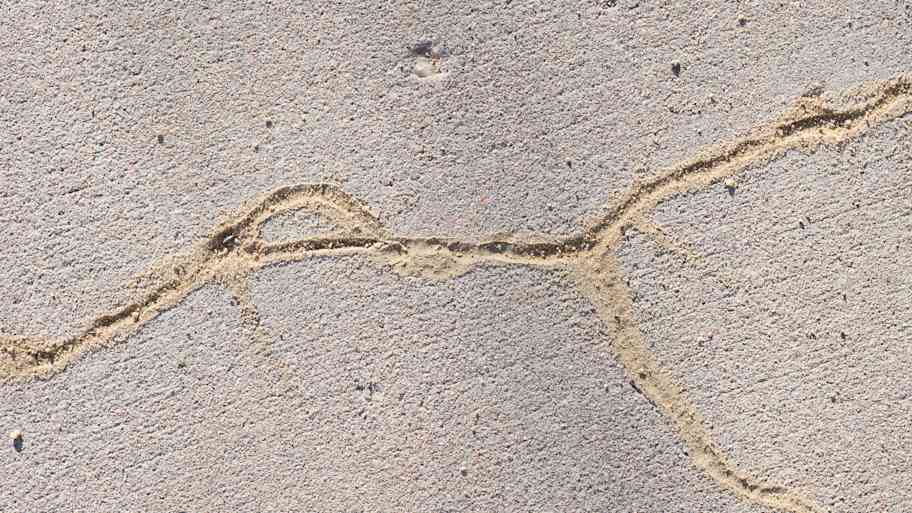7 Tips to Prevent Concrete From Cracking
While you can't avoid every concrete crack, you can help keep most at bay


Concrete might be one of the most durable building materials around, but it's tricky to lay and concrete cracks are common. If you want to know how to prevent concrete from cracking, ensure the best longevity, and prevent costly repairs, follow these seven simple tips for a crack-free finish in your patio or driveway.

1. Don’t Go Overboard With Water
Concrete is notoriously tricky to mix, and it’s tempting for many novice DIYers to add a bit of extra water to make the job easier. But not so fast—even a small portion of water over the recommended amount can weaken the concrete, leading to the need for concrete crack repairs in the future.
Make sure you select the correct type of concrete mix for the job and follow the instructions carefully. If you need a little extra water to remove any dry bits, add it very sparingly.
2. Cure Your Concrete Carefully
Though concrete takes almost a month to cure completely, the curing process is most sensitive during the first few days after pouring. What you do during this window impacts whether you end up with shrinkage cracks.
Although the cracks that form, often referred to as map cracks, are typically only cosmetic, it doesn’t make for an attractive finish. Sometimes, severe cracking can also occur, impacting the overall strength and integrity of the finish. So after pouring, keep your concrete moist and free from load-bearing.
Keeping the Concrete Moist
To prevent concrete spalling, ensure the moisture evaporates from the poured mixture gradually. There are a few things you can do to help it cure:
Spray the concrete with water a few times a day for a week after curing. You might need to do this more frequently during hot weather.
Lay a wet, moisture-retaining fabric on top of the curing concrete. Just make sure the concrete’s surface is hard enough that the fabric’s weight won’t cause any damage.
Purchase a curing compound. You can spray this onto the concrete immediately after laying it to form a protective layer that retains moisture.
3. Use Control Joints
Concrete will inevitably crack at some point, but inserting control joints keeps them from randomly appearing. Instead, you’ll be able to direct cracks to spots that are easier to repair with a concrete sealant.
Add the control joints within 24 hours after pouring. You can use a few different types: They can be hand-tooled using malleable concrete, created by placing flexible wood fiber or plastic strips, or you can wait until you can saw the concrete to create them.
The correct placement of these control joints is vital; otherwise, they won’t do the job they are supposed to. Typical 4-inch-deep concrete should have control joints placed no further than 8 to 12 feet apart.
4. Prepare and Compact the Base
A well-prepared base decreases the chances of premature settlement cracks. The sub-grade should be smooth, well tamped down, have good drainage, and be frost-free. Without this sturdy, stable base, the concrete slabs will have more room for movement, and cracks will form.
Loose soil is an absolute no-no, so don’t dig too far down when preparing your sub-grade. This could result in having to refill some of the space with more soil, leading to more settlement issues.
5. Add Reinforcements
To give your concrete extra strength, consider adding some extra reinforcement underneath. Steel rebar or, for smaller projects, wire mesh grids can help extend the concrete’s life span and reduce the number of future cracks.
6. Keep an Eye on the Weather
The best time to pour concrete is during warm weather. Don’t attempt this job when surface temperatures could drop below 35 degrees Fahrenheit. If there are any unexpected temperature drops (below 50 degrees Fahrenheit) the week after laying, cover the concrete. Using an insulated or heated blanket or thick polythene sheeting helps prevent structural weakness and cracking.
You’ll also want to shelter your curing concrete from strong winds, which can also cause surface cracks.
7. Cover the Concrete
Use an insulated blanket or sheet to cover the concrete and protect it from temperatures below 50 degrees Fahrenheit. Cold weather can weaken the structural integrity of concrete, especially in the first few days after pouring when it’s at its most vulnerable. If you need to spray down the concrete to keep it moist, uncover the blanket or sheet to do so, then re-cover the uncured concrete.
When to Worry About Concrete Cracks
Most hairline cracks are more of a cosmetic problem. Though they look unsightly, any crack that’s one-eighth of an inch or smaller is considered standard.
If a deep crack forms that’s wider than a credit card, this could signify a more serious issue. On the ground, it’s a trip hazard, and foundation cracks can cause structural problems. If you have concerns, you can have a local concrete driveway pro assess the damage and recommend a repair solution.
In minor cases, concrete leveling may be a cost-effective alternative to a full repair, but for multiple cracks (or larger cracks), the pro will most likely recommend removing the cracked concrete and pouring new concrete.
To save money on concrete repair, get quotes from at least three concrete professionals. You can also ask friends, family, and neighbors for contractor recommendations. One caveat, though: Don’t be completely swayed by low prices. Use these questions to ask a concrete contractor before hiring one—and only go with a pro offering good prices and good answers to the questions.
Frequently Asked Questions
Thicker concrete is less likely to crack due to extreme weather changes. At a minimum, concrete slabs should be at least 4 inches, but if you’re worried about the concrete cracking under the weight of heavy machinery or from the freeze-thaw patterns of your climate, you should use even thicker concrete. A professional concrete company near you will be able to advise on the best thickness for your climate and use case.
Concrete cracks can occur at any time. Many cracks actually happen within a few hours or days of pouring the concrete because of mistakes made during the process; here are a few reasons for freshly poured concrete cracks.
If you’re nervous about causing cracks when pouring concrete, hire a pro to handle the work, rather than tackling it yourself. You can also prevent ongoing cracks by taking care of your concrete pathway or driveway with a little sealer. Here’s how often to reseal your driveway to reduce the risk of cracks.
Minor hairline cracks in your concrete may not look pretty, but they’re often not serious. It’s when concrete cracks are larger—wide enough that you can slide a credit card into it—that you need to worry. If you monitor a crack and can trace its active expansion over time, you’ll definitely want to call in a pro to inspect it and, potentially, repair it.
Want to prevent cracks in your garage and driveway concrete in the future? Stay on top of sealing. Here’s how to seal your concrete garage floor and driveway.





- Why Is My New Concrete Cracking, and How Do I Prevent It?
- How to Fix Cracks in Concrete
- Can You Pour New Concrete Over Existing Concrete?
- 9 Tips and Tricks for Beginners Working With Concrete
- 6 Concrete Maintenance Tips to Extend Its Longevity
- Who Do I Call to Repair Concrete?
- 10 Things to Know Before Pouring Concrete in Cold Weather
- Things to Know Before Pouring Concrete in the Rain
- How to Clean Concrete Indoors and Outdoors
- How to Dispose of Concrete 5 Ways










